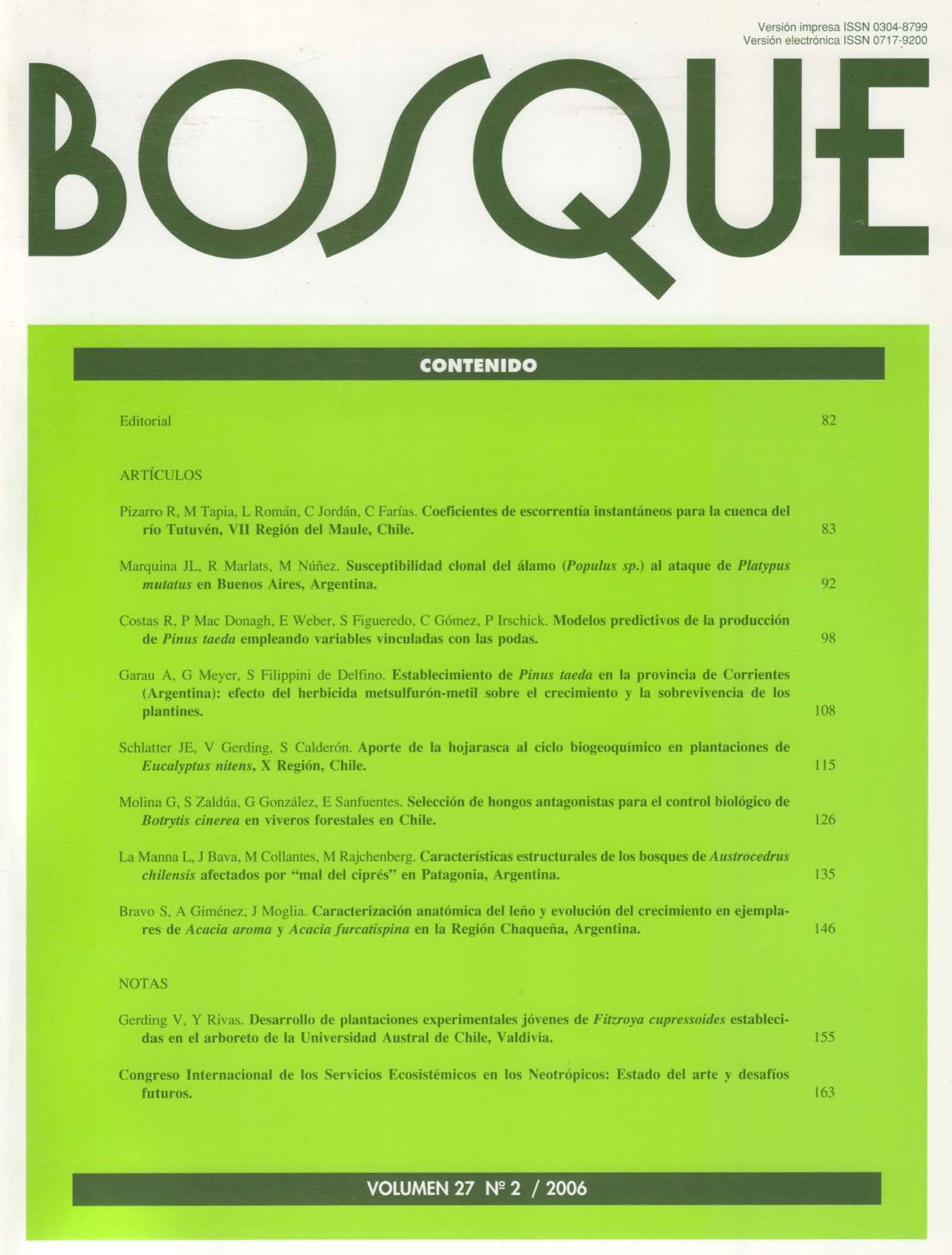Litter contribution to biogeochemical cycle in Eucalyptus nitens plantations, X Region, Chile
Main Article Content
Abstract
The litterfall in Eucalyptus nitens plantations, established on an andisol (close to Fresia, X Region, Chile), were measured after canopy closure (4–7 years old), in an area under different fertilization treatments. At canopy closure annual litterfall was the highest (7–11 t ha–1), and becoming lower after it (5-6 t ha–1); the main quantity was measured in summer (45-60%). With the annual biomass the following amounts of nutrients return to the soil (kg ha–1 year–1): 20-50 N, 1-4 P, 5-40 K and 31-151 Ca, respectively, depending on age and fertilizer treatment. The O horizon (litter layer) accumulated 6-10 t ha–1 dry matter at age 7 and the thinning and pruning, carried out at age 5-6, contributed with similar amounts of branches and bark. The litter layer accumulated 100-190 N, < 15 P, 20-40 K and 140-230 Ca kg ha–1, respectively. This biomass and nutrients constitute an important reservoir for the ecosystem and the sustainability of future rotations.

